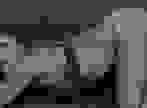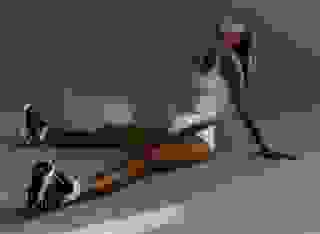- Romance
- An Alaska Tundra Adventure
Note: You can change font size, font face, and turn on dark mode by clicking the "A" icon tab in the Story Info Box.
You can temporarily switch back to a Classic Literotica® experience during our ongoing public Beta testing. Please consider leaving feedback on issues you experience or suggest improvements.
Click hereMatt Reynolds ran through the landing checklist for his Cessna 180 Skywagon after Anchorage air control had given him clearance to land. He was lined up into the prevailing wind about two miles out from Lake Spenard and flying at a little over two thousand feet. When he was sure everything was in order Matt watched his glide slope indicator to make sure he was maintaining a glide slope of a little over three degrees. That glide slope would let him safely clear the buildings at the east side of the lake before touching down on the water.
When the small waves on the water were about ten feet below the Cessna, Matt pulled the flaps to the fourth click and then cut the engine to idle. The Cessna settled quietly down on the floats a few seconds later and after her momentum carried her a few feet, she began to slow down. Matt raised the flaps and gave the Continental engine enough fuel to taxi through the narrows and then up the marina to his dock. Once there, he went through his shutdown checklist before shutting down the engine and climbing out to tie the Cessna to the dock.
This landing would have been a pretty standard landing for most pilots other than the fact that it was on water. For Matt, it was almost boring. Matt made his living as an Alaskan bush pilot and he'd flown into and out of places most pilots would never consider to be safe, let alone actually attempt a landing and take off. Matt was successful because he knew the Cessna, knew what she could and couldn't do, and also knew what he could and couldn't do.
Matt had always liked challenges and the adventure answering those challenges led him to experience. He'd grown up on a small farm in the middle of Illinois, but never really liked the routine of farming. He did the chores to which he was assigned, but lived for two things -- the activities of his Boy Scout Troop and fishing and hunting. He achieved the rank of Eagle Scout when he was seventeen and kept his family in fish dinners at least a couple times a month. His family also enjoyed the pheasants he brought back from his weekend hunting trips in the fall. They weren't as happy with the squirrels and rabbits but his mother never said she wouldn't cook them.
Matt was sixteen when he started working on his Aviation merit badge. He completed the requirements by building a foam glider and demonstrating to the merit badge counselor, a man who had been a pilot in Vietnam, that he understood aircraft flight systems and that his glider would fly. He earned that merit badge and also discovered the second love of his life, that being aviation.
Matt started flying at the University of Illinois Institute of Aviation in 2010 when he was just eighteen. The Institute of Aviation was transferred to a local junior college in 2011, but stayed a part of the U of I until 2023. It was there that Matt had earned his private pilot's license in 2011, his commercial pilot's license in 2012, and his instrument rating and multi-engine rating in 2013. He was qualified to fly anything with a piston engine and went looking for a job.
What he found was flying freight charters out of Indianapolis. While there was commercial service from Indianapolis, that service was always routed through a major airport like O'Hare in Chicago, Dallas, Detroit or Atlanta. That increased travel time for freight that had to be at its destination without any stops along the way.
For that reason, many of the larger businesses had their own planes, usually a small prop jet. The Beechcraft King Air seemed to be popular. It was more expensive for a company to own a plane and have two pilots on staff, but it cut down on the time a general manager or president had to be away from his desk and it could be used for small freight shipments too. When the economy took a tumble, most of those businesses sold their planes to cut expenses, but they didn't go back to flying commercial flights. Instead of flying their own planes with their own pilots, they booked charters.
Matt liked flying all over the country. The larger airports were a headache because of all the air traffic, but the smaller airports were a blast. At first he flew only cargo, but after a year of study, he got his Airline Transport pilot's license and could fly any kind of charter.
He'd fly in, taxi to the terminal if there was one, and after his passengers left to do their business, he'd gas up the plane, do his pre-flight, and then go talk to the guys who worked for the Fixed Base Operator.
There was always at least one aviation mechanic working there, and Matt started learning about the nuts and bolts of airplanes. In school, he'd learned more details about how the various systems worked, but this was the real deal. That's when he decided he needed to get an airframe and powerplant license.
Two years of more school later, Matt was certified to work on airframes and powerplants which meant he could legally tear a plane down to parts and then rebuild it to new condition as well as perform any other kind of repairs and maintenance and certify it as flight-worthy. He took another year and got his certification in avionics, the electronics in a plane for communication, instrumentation, and control systems.
At the time, he had a little over four hundred hours of flight time in his log book and knew he could do better than flying charters. He started looking at jobs in smaller airlines. He found several, but they were basically just large charter services who had regularly scheduled flights from some small airport to a major airport. The passengers didn't have to drive a hundred miles to find a commercial flight. They could just go to their local airfield.
That meant he'd be flying into major airports most of the time, and Matt didn't think he'd like that. If it wasn't having to wait in a holding pattern while ground control let some 747 land, it was fighting the turbulence those big jets left behind them on takeoff. He never had much trouble with either, but it wasn't something he enjoyed.
He was reading a magazine article about pilots in Alaska one night, and realized that was the kind of career he wanted. There were few major airports in Alaska, but many smaller airports. A lot of towns in Alaska relied on air transportation to not only get them back and forth to a major city, but also to deliver the things they needed in everyday life. The roads to those towns weren't all that great and some towns were so remote there was no way to get there by a road.
Matt sent an application to Anchorage Air Services listing all his qualifications. He figured if they didn't need a pilot, they might need an A&P mechanic. He was a little surprised when he got a phone call from the owner. The owner asked a lot of questions about his education and experience and also why he would want to work in Alaska. After Matt had answered all the questions, the owner asked Matt if he could fly to Anchorage for an in-person interview. About half of his business was repairing and upgrading the aircraft owned by other people, so the job would be that of an aviation mechanic, but Matt would still fly at least once a week.
It took a significant chunk of his savings to take the flight, but a week later, Matt was watching the trees and water go by as the plane made it's final approach into Anchorage. It was summer and everything looked lush and green, not flat and covered with fields of corn and soybeans like Indiana. The water in the two lakes next to the runway was deep blue in color and Matt wondered what kind of fish might be there.
He also noted the hundreds of small planes on pontoons parked at moorings in one area between the lakes. He'd read about them and how they were different to take off and land, and wondered if he'd get the opportunity to find out, assuming he got the job.
Two weeks later, he said goodbye to his family at the airport in Indianapolis and promised to write and send them pictures, then got on a plane for Anchorage. He moved into a small apartment, bought a used car, and then started work as a mechanic for Anchorage Air Services.
It was interesting work. All aircraft are required to have checks done a certain intervals and some of those checks have to be signed off by a certified A&P mechanic. There are also periodic maintenance tasks that have to be done by a certified mechanic. The planes in Alaska log a lot of hours, so there were a lot of checks and maintenance that had to be done. Matt worked on all types of aircraft, from small pleasure planes to the planes that hauled cargo to far-flung towns with no passable roads.
His first flight in a pontoon-equipped aircraft was a check flight he did after an engine overhaul. He was accompanied by an older mechanic who had flown bush planes until he'd developed a heart condition. It didn't keep him from flying, but the company's insurance wouldn't cover him if he flew passengers.
Wilbur had walked Matt through the pre-flight and then told him to fly the plane. Matt was a little nervous, but started the engine of the 1950 de Havilland DHC-2 Beaver and then began to taxi out to the lake. As the plane slowly made its way down the lake in order to take off into the wind, Wilbur explained the take off.
"At first, she'll feel like she's made of lead, but don't let that bother you. She's old, but you can't tear up a DHC-2. They'll take anything and keep on flying. Now, when we get to the end of the lake, bring her into the wind, drop the flaps, set the mixture to full, and then start easing the rpm up. Don't just slam it to full rpm or she'll tip over on her nose. You'll feel it when the pontoons get up on the steps. Ease the throttle forward until she's at takeoff speed, and then pull the yoke back just like if you were taking off on wheels. She'll come right off the water then and you'll be in the air. After that, she'll fly about like any other plane."
Matt's senses were tingling when he pushed the throttle forward, and it was just like Wilbur said. The de Havilland was moving, but slowly. He pushed in more throttle, then a little more until he was feeling the slight slap of waves against the pontoons. Wilbur said, "she's about ready now. Give her about enough throttle she starts to skip the waves. When she does, give her more and pull back on the yoke. Don't be bashful about pulling the yoke. She ain't gonna stall out."
Matt felt a thrill as the de Havilland left the water. It was almost the same thrill he'd felt when he made his first takeoff back at the U of I. In a couple minutes, Matt had left the airport, trimmed everything out, and then turned onto the heading he'd put down when he filed his flight plan.
The flight lasted only about fifteen minutes, fifteen minutes during which Matt checked all the instruments to make sure the engine was running as it should. He then turned back toward Lake Spenard.
Once he was lined up on the lake, Wilbur explained how landing a pontoon-equipped aircraft was a little different.
"You ain't got no springs or shock absorbers so you gotta make a soft landing. You ain't gonna break anything if you land a little too hard, but it'll make us look like fools to anybody watching. Just set your glide slope like you normally would and then keep watching the altimeter. Use the throttle to maintain a constant rate of descent. Keep her nose up until you feel the pontoons catch on the water, then cut the engine back and ease forward on the yoke. She'll settle down on her pontoons without making a splash."
Matt knew that landing wasn't perfect because he did feel a little bump when the pontoons touched down, but when he looked over at Wilbur, he was smiling.
"Not bad for your first time. Not bad at all. After a few hundred more water landings, you'll be ready to land in a mud puddle."
After that first flight, Matt was hooked. He registered for the classes required to get a bush pilot's certification and began spending his days off in those classes. After taking all the classes and passing every check ride, he began flying from Anchorage to remote fishing camps during the summer and hunting camps in the fall. Winters were usually trips to take supplies to remote towns and then the plane would be equipped with skis with wheels, wheels for takeoff from the airport in Anchorage and skis to land on a snow runway the town usually kept reasonably cleared.
It was after two years of those flights Matt decided to open his own business. He was twenty-eight and figured he'd spend the rest of his life as a bush pilot. He'd saved enough money for a down payment on the Cessna 180, and wrote a business plan the bank would accept as reasonable. The business plan was easy to write, because demand for air transport was high and the supply of planes and pilots couldn't keep up. It wasn't unusual for a client to be told he'd have to wait a week because all the available planes were already committed.
He rented a slip for the Cessna that had a dock, a ramp and a small building. The building had been just for storage, but Matt turned it into a residence/office, and then put a sign that said, "Reynolds Air Charters" out beside the mailbox. He then had some brochures printed and placed in the rack at the Anchorage airport as well as in the hotels in Anchorage. He offered same day service to any point in Alaska within three hundred miles of Anchorage. That covered a lot of fishing camps and small towns, and Matt immediately began getting business.
His business improved because while he couldn't haul a lot of weight because of the Cessna's capacity, she was small enough to be able to land on some lakes that larger planes couldn't. His service became a favorite of a few remote fishing camps and he was either flying to one or flying back from one at least once a week.
That day, Matt had just finished tying the Cessna to the landing and was walking back to his trailer when he saw a cab pull up. A woman got out, paid the driver, and then started walking toward him.
The woman walked up to Matt, smiled, and asked if this was Reynolds Air Service.
"If this is Reynolds Air Charters, would you tell the owner I'd like to speak with him?"
Matt smiled.
"I'm Matt Reynolds, owner, pilot, mechanic, and chief cook and bottle washer. What can I do for you?"
The woman stuck out her hand.
"I'm Amanda Garmin, Professor of Archeology on sabbatical leave from the University of Utah. I was told at the airport that you're one of the best bush pilots in Anchorage and that you'll fly anywhere. I have a job for you, if you want it."
Matt grinned.
"Well, that depends on the job. Where do you want to go?"
Amanda smiled.
"Can we go inside to talk?"
Matt waved his hand and started toward his office. He opened the door and after Amanda went inside, followed her and then closed the door behind him. Amanda was standing at his desk and taking something out of her purse. He asked her to sit down and then took his own chair behind the desk.
"OK, now where do you want to go?"
Amanda unfolded a small map of Alaska and then pointed to a circle drawn on the north coast on the Bearing Sea.
"Here. I need to go here."
Matt looked at where the circle was and nodded.
"I can take you there, but it will take a couple of days because I'll have to stop for fuel once and we'll have to spend a night somewhere. That'll probably be Nome. I can make it that far before I need fuel and there are a couple hotels there."
Matt looked at her map again.
"Just out of curiosity, why do you want to go up there? There's nothing there except tundra and some small lakes. Most of the lakes don't even have names. The Iñupiat live up there but that's in Wales and Shismaref."
Amanda smiled.
"My life's work has been to document the progression of Native Americans from Siberia, across the Bearing Sea land bridge, and then the spread into North America. It is generally accepted that the first Native Americans to cross over are now the tribes furthest South, like in South America. Because they came first, they had more time to move South. The Native Americans in Alaska were the last to cross, and may have actually crossed by boat once the ice melted and began to submerge the land bridge.
"One of the ways we document arrival dates is by the stone tools they left behind in areas where they settled. A particular type of tool, say, a spear point, can be compared to similar tools made by a particular tribe. By radiocarbon dating the strata in which the tool is found, we can estimate a date the tool was left there. In general, the stone tools the Alaskan Native Americans were using when they were discovered show a close similarity to the same tools used by the native tribes in Siberia. Therefore, it has always been assumed that the Native Americans in Alaska were the last to cross. Radiocarbon dating has established that date to be about three hundred B.C.
"During my studies of some artifacts in the University collection, I found a stone spear point supposedly found on the Bearing Sea coast of Alaska that more closely resembled the stone spear points of the Tillamook people who came to North America two thousand years before that. While it is possible that stone point was a trade item, the distance between the two cultures makes that unlikely. It is more likely some of the ancestors of the Tillamook remained on the North coast of Alaska.
"After tracking down the history of the artifact, I was able to find the description of the location given by the Iñupiat fisherman who found it. He sold it to a trader who sold it to a collector who ultimately donated it to the university collection. Along with the artifact was a hand written description of the location as given to the trader by the fisherman. That location was described as being between two rivers that flowed into a lake with an island in it. One of my grad students spent six months studying the area before finding a small lake with the same features and recorded the latitude and longitude.
"The fisherman's account of the finding indicates he saw the remains of a primitive structure in the area. I want to fly up there, see if the structure exists, and do some more excavating to see if more artifacts can be found."
Matt smiled.
"I flew an archeological expedition to Wales a year ago, but there were six people and a lot of equipment. You're going to do this by yourself?"
Amanda shook her head.
"No, this is just an initial survey. I intend to spend a week there walking the area and looking for any signs of human activity. If I find any, I'll be back next year with a full expedition."
Matt opened his laptop and then Google Earth.
"Well, let's see where your coordinates will take us. Then I'll tell you how close I can get you. Give me the latitude and longitude."
Amanda took another paper from her purse and read off the coordinates. Matt entered those coordinates into Google Earth and waited while the location came into view. Then he frowned.
"I see the lake with the island. I can probably land there OK, but flying back out might be tough. Once we get there, I'll have to do a fly-over to see how deep the water looks. If I don't think I can take off from the lake, we'll have to land in Ikpek lagoon and then walk in. Looks like it's maybe half a mile.
"It'll be more expensive if I stay with you, but I wouldn't recommend that you stay there by yourself. The ice won't be forming yet so there probably won't be any polar bears in the area, but grizzlies are always a risk. There's also the possibility you'd get hurt somehow, and without anybody else there, it could get bad really fast. I get three hundred a day plus the cost of fuel, my hotel expenses, and any supplies we'll need. Still want to go?"
By seven the next morning, Matt had the fuel tanks on the Cessna filled and his pre-flight done. Amanda arrived in a cab at seven thirty with two duffel bags and dressed in snug jeans and hiking boots. She also wore a light jacket because mornings in Anchorage got pretty chilly the last part of August, but she hadn't zipped up the jacket and her breasts pushed the jacket open enough Matt could see the khaki shirt she wore under it. He hadn't noticed them before because she'd worn a dress that didn't fit very tight.








